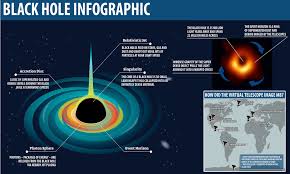
The golden anniversary of black-hole singularity
When a star collapses forming a black hole, a space-time singularity is created wherein the laws of Physics no longer work. In 1965 Sir Roger Penrose presented a theorem where he associated that singularity with so-called ”trapped surfaces” that shrink over time. That hypothesis -one of the results of the general theory of relativity- is now celebrating its anniversary.
Exactly 50 years ago, the physicist and mathematician Sir Roger Penrose, currently Professor Emeritus at the University of Oxford (United Kingdom), formulated a theorem in which he associated two concepts related to relativity. One of these concepts is gravitational singularity, an ‘error’ in space-time where physical quantities cannot be defined.
The other concept is that of so-called ”trapped surfaces”, areas that inevitably shrink over time. These surfaces are formed by the explosion of a star at the end of its life, thus causing its collapse and the subsequent formation of a black hole. At that moment, a gravitational singularity is created where time ceases to exist and the laws of known Physics can no longer be applied.
Penrose’s theorem relates both concepts and is considered the first major mathematically rigorous result of Einstein’s general theory. Shortly after presenting his theorem, Penrose and the acclaimed Stephen Hawking tested another theorem which indicates that an expanding universe -such as ours- must have its origin in an instantaneous singularity: the Big Bang, the mysterious initial state which has infinite density.
”What these two theorems are saying is that the general theory of relativity predicts the existence of singular and catastrophic occurrences, such as that which happens inside a black hole or the great initial expansion of the universe, under certain physically reasonable conditions,” explains José M. M. Senovilla, theoretical physicist at the University of the Basque Country and co-author of a study concerning these theorems.
“But they also indicate that Einstein’s theory includes and describes its own limitations -he adds-, since said theory no longer seems valid in certain situations under extreme conditions due to the occurrence of totally unacceptable ‘infinite’ singularities.”
The theorems in and of themselves do not imply that catastrophic events such as black holes have to occur. Singularity could be averted if the hypotheses of the theorem were nullified. “An example in which this would occur would be if the energy density of the entire Universe were, on average, null; but the problem is that this case seems to be highly unrealistic, so singularities prevail,” the researcher notes.
Senovilla’s study on Penrose’s singularity theorem has been published in the journal ‘Classical and Quantum Gravity’ along with 12 other articles highlighting the milestones that mark 100 years of Einstein’s General Theory of Relativity, the one-hundredth anniversary of which is also celebrated in 2015.
